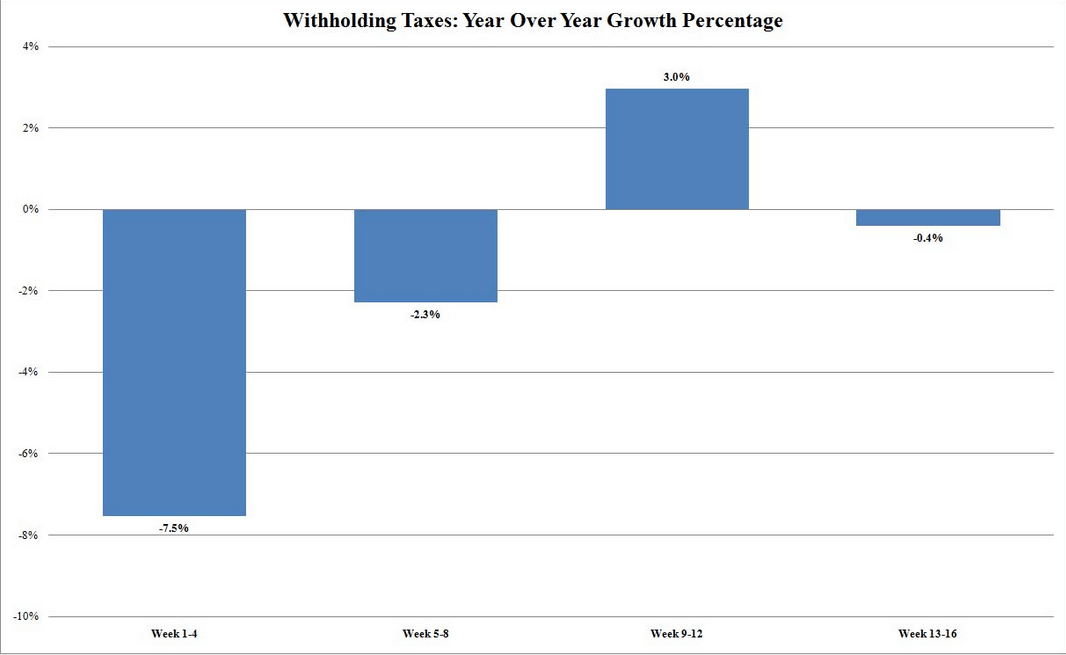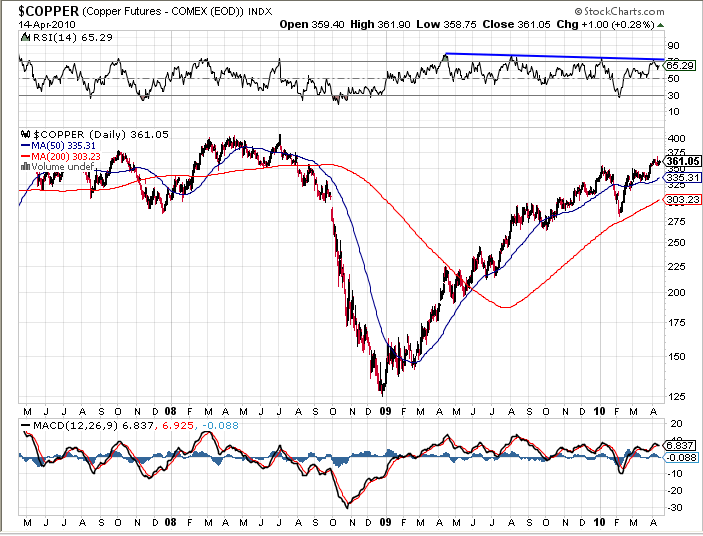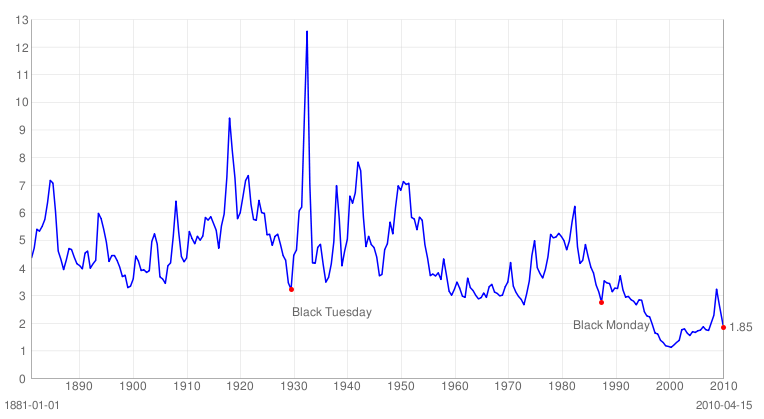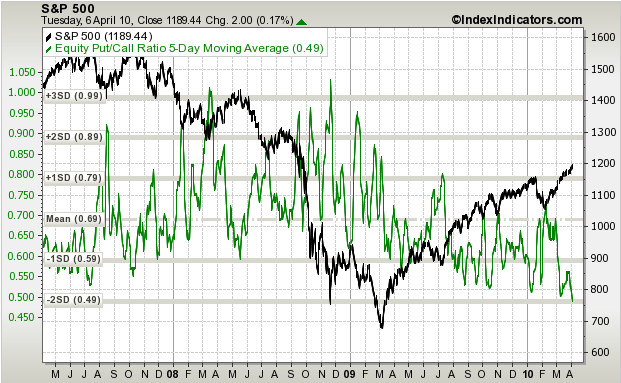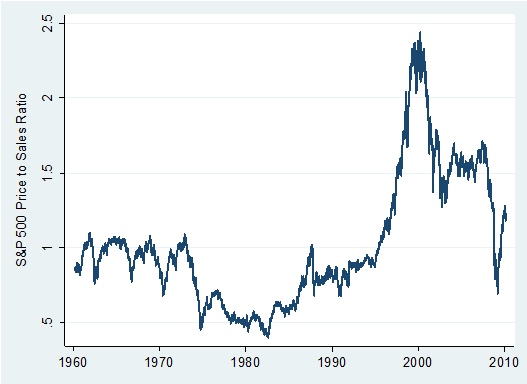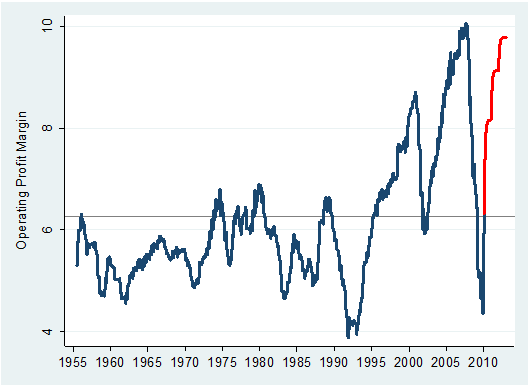Bloomberg today gives a tour of the bull camp, which believes in a V-shaped recovery and soon-to-be record S&P earnings:
Even after the biggest rally since the 1930s, U.S. stocks remain the cheapest in two decades as the economy improves…
…Income is beating analysts’ estimates by 22 percent in the first quarter, making investors even more bullish that the rally will continue after the index climbed 80 percent since March 2009. While bears say the economy’s recovery is too weak for earnings to keep up the momentum, Fisher Investments and BlackRock Inc. are snapping up companies whose results are most tied to economic expansion.
“The stock market is incredibly inexpensive,” said Kevin Rendino, who manages $11 billion in Plainsboro, New Jersey, for BlackRock, the world’s largest asset manager. “I don’t know how the bears can argue against how well corporations are doing.”
S&P 500 companies may earn $85.96 a share in the next year, according to data from equity analysts compiled by Bloomberg. That compares with the index’s record combined profits of $89.93 a share from the prior 12 months in September 2007, when the S&P 500 was 19 percent higher than today.
Those figures would be for operating earnings, not the bottom line. In recent years it has been increasingly common to simply call operating earnings “earnings” and to imply that multiples on this figure should be compared to historic multiples on the bottom line. Ken Fisher, readers may recall, was running obnoxious video web ads through 2007-2008 touting a continued rally just before stocks fell off a cliff. His equity management firm makes the most money if people are all-in, all the time, as it collects fees as a percent of assets.
Record Pace
The earnings upgrades come as income beats Wall Street estimates at the fastest rate ever for the third time in four quarters. More than 80 percent of the 173 companies in the S&P 500 that reported results have topped estimates, compared with 79.5 percent in the third quarter and 72.3 percent in the three- month period before that, Bloomberg data show.
It is impressive how companies have protected themselves since the downturn began, but the way they have done this is by simply cutting costs, hence the stubborn 9.5% (headline U-3) or 17% (U-6) unemployment rate.
David Rosenberg, as usual, is the cooler head in the room:
Alternate Valuation
David Rosenberg, chief economist of Gluskin Sheff & Associates Inc., says U.S. stocks are poised for losses because they’ve become too expensive. The S&P 500 is valued at 22.1 times annual earnings from the past 10 years, according to inflation-adjusted data since 1871 tracked by Yale University Professor Robert Shiller.
Economic growth will slow and stocks retreat as governments around the world reduce spending after supporting their economies through the worst recession since the 1930s, said Komal Sri-Kumar, who helps manage more than $100 billion as chief global strategist at TCW Group Inc. The U.S. budget shortfall may reach $1.6 trillion in the fiscal year ending Sept. 30, according to figures from the Washington-based Treasury Department.
“The correction is going to come,” Sri-Kumar said in an interview with Bloomberg Television in New York on April 21. “You now have a debt bubble growing in the sovereign side, and we’re slow to recognize how negative that could be.”
We are still in the thick of the largest credit bubble in history. Consumer and real estate debt has yet to be fully liquidated (and hasn’t even started in China), corporate indebtedness is the highest ever, and now government debt has reached the point of no return where default is inevitable.
Equity is the slice of the pie left over after all debts are serviced, so to say that it is cheap when it only yields 1.7% (in the case of S&P dividends) is insane. It is much safer to be a creditor of a business than an owner, so debt yields should be lower than equity yields. In today’s perverse investment climate, even 10-year treasuries of the US and Germany yield more than twice equities.
This extreme confidence in stocks and dismissal of risk considerations further indicates that this is a toppy environment, highly reminiscent of 2007.
John Hussman explores this theme a bit further in his latest market comment:
As of last week, our most comprehensive measure of market valuation reached a price-to-normalized earnings multiple of 19.1, exceeding the peaks of August 1987 (18.6) and December 1973 (18.3). Outside of the valuations achieved during the late 1990′s bubble and the approach to the 2007 market peak, the only other historical observation exceeding the current level of valuation was the extreme of 20.1 reached just prior to the 1929 crash. The corollary to this level of rich valuation is that our projection for 10-year total returns for the S&P 500 is now just 5.3% annually.
While a number of simple measures of valuation have also been useful over the years, even metrics such as price-to-peak earnings have been skewed by the unusual profit margins we observed at the 2007 peak, which were about 50% above the historical norm – reflecting the combination of booming and highly leveraged financial sector profits as well as wide margins in cyclical and commodity-oriented industries. Accordingly, using price-to-peak requires the additional assumption that the profit margins observed in 2007 will be sustained indefinitely. Our more comprehensive measures do not require such assumptions, and reflect both direct estimates of normalized earnings, and compound estimates derived from revenues, profit margins, book values, and return-on-equity.
That said, valuations have never been useful as an indicator of near-term market fluctuations – a shortcoming that has been amplified since the late 1990′s. The lesson that valuations are important to long-term investment outcomes is underscored by the fact that the S&P 500 has lagged Treasury bills over the past 13 years, including dividends. Yet the fact that these 13 years have included three successive approaches (2000, 2007, and today) to valuation peaks – at the very extremes of historical experience – is evidence that investors don’t appreciate the link between valuation and subsequent returns. So they will predictably experience steep losses and mediocre returns yet again. Ironically, before they do, it also means that investors who take valuations seriously (including us) can expect temporary periods of frustration.
I’ve long noted that the analysis of market action can help to overcome some of this frustration, as stocks have often provided good returns despite rich valuations so long as market internals were strong, and the environment was not yet characterized by a syndrome of overvalued, overbought, overbullish, and rising yield conditions. In hindsight, the stock market has followed this typical post-war pattern, and we clearly could have captured some portion of the market’s gains over the past year had I ignored the risk of a second wave of credit strains (which I remain concerned about, primarily over the coming months).
It is important to recognize, however, that even if we had approached the recent economic environment as a typical, run-of-the-mill postwar downturn, we would now be defensive again, as a result of the current overvalued, overbought, overbullish, rising yields syndrome. I do recognize that my credibility in sounding a cautious note would presently be stronger if I had ignored further credit risks and captured some of the past year’s gains. But the awful outcome of this same set of conditions, which we also observed in 2007, should provide enough credibility.
Hussman proceeds to offer a detailed statistical analysis of how valuation and market action impact risks and returns. Curious parties are encouraged to read his essay in its entirety.
Here is how he rather bluntly sums up the current environment:
As of last week, the Market Climate in stocks remained characterized by an overvalued, overbought, overbullish, rising-yields syndrome that has historically produced periods of marginal new highs, slight declines, and yet further marginal highs, followed somewhat unpredictably by nearly vertical drops. I’ve often accompanied the description of this syndrome with the word “excruciating,” because the apparent resiliency of the market and the celebration of each fresh high, can make it difficult to maintain a defensive stance. Interestingly, the analysts at Nautilus Capital recently noted that the most closely correlated periods in market history to this one were the advances of 1929 and 2007. While exact replication of those advances would allow for a couple more weeks of further strength, we’ve generally found it dangerous to expect history to do more than rhyme. These hostile syndromes have a tendency to erase weeks of upside progress in a few days.
I have to agree with this assessment as well as that of Robert Prechter that this spring offers perhaps the greatest short-selling opportunity in history.

